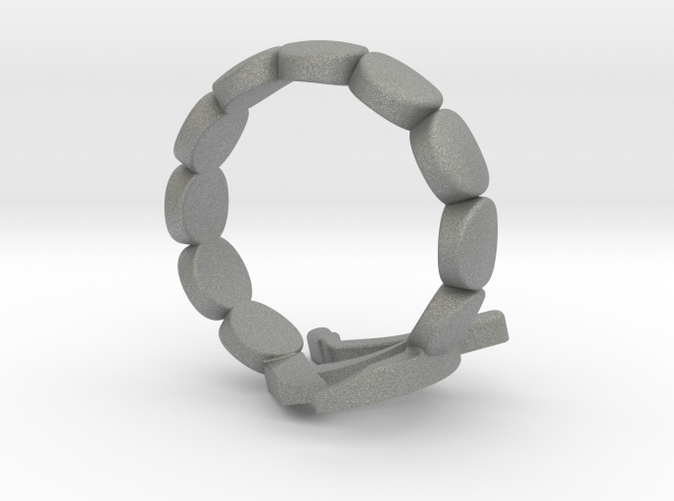Product Description
This ring depicts a Russian hammer, which drives Ukrainian territory into the union. The hammer is opposed by the sickle - Ukraine (the world granary)
The Soviet Union, officially the Union of Soviet Socialist Republics (USSR), was a socialist state that spanned Eurasia during its existence from 1922 to 1991. It was nominally a federal union of multiple national republics;[q] in practice its government and economy were highly centralized until its final years. The country was a one-party state (prior to 1990) governed by the Communist Party of the Soviet Union, with Moscow as its capital within its largest and most populous republic, the Russian SFSR. Other major urban centers were Leningrad (Russian SFSR), Kiev (Ukrainian SSR), Minsk (Byelorussian SSR), Tashkent (Uzbek SSR), Alma-Ata (Kazakh SSR) and Novosibirsk (Russian SFSR). It was the largest country in the world, covering over 22,402,200 square kilometres (8,649,500 sq mi), and spanning eleven time zones.
The Soviet Union had its roots in the October Revolution of 1917 when the Bolsheviks, headed by Vladimir Lenin, overthrew the Provisional Government that had earlier replaced the house of Romanov of the Russian Empire. They established the Russian Soviet Republic, the world's first constitutionally guaranteed socialist state.[r] Tensions escalated into a civil war between the Bolshevik Red Army and many anti-Bolshevik forces across the former Empire, among whom the largest faction was the White Guard. The White Guard engaged in violent anti-communist repression against the Bolsheviks and suspected worker and peasant Bolsheviks known as the White Terror. The Red Army expanded and helped local Bolsheviks take power, establishing soviets, repressing their political opponents and rebellious peasants through Red Terror. By 1922, the balance of power had shifted and the Bolsheviks had emerged victorious, forming the Soviet Union with the unification of the Russian, Transcaucasian, Ukrainian and Byelorussian republics. Upon the conclusion of the civil war Lenin's government introduced the New Economic Policy, which led to a partial return of a free market and private property; this resulted in a period of economic recovery.
Following Lenin's death in 1924, Joseph Stalin came to power. Stalin suppressed all political opposition to his rule inside the Communist Party and inaugurated a command economy. As a result, the country underwent a period of rapid industrialization and forced collectivization, which led to significant economic growth, but also led to a man-made famine in 1932–1933. The Gulag labour camp system was also expanded in this period. Stalin also fomented political paranoia and conducted the Great Purge to remove his actual and perceived opponents from the Party through mass arrests of military leaders, Communist Party members, and ordinary citizens alike, who were then sent to correctional labor camps or sentenced to death.
On 23 August 1939, after unsuccessful efforts to form an anti-fascist alliance with Western powers, the Soviets signed a non-aggression pact with Nazi Germany. After the start of World War II, the formally neutral Soviets invaded and annexed territories of several Eastern European states, including the eastern regions of Poland, Lithuania, Latvia and Estonia. In June 1941 the Germans invaded, opening the largest and bloodiest theater of war in history. Soviet war casualties accounted for the majority of Allied casualties of the conflict in the process of acquiring the upper hand over Axis forces at intense battles such as Stalingrad. Soviet forces eventually captured Berlin and won World War II in Europe on 9 May 1945. The territory overtaken by the Red Army became satellite states of the Eastern Bloc. The Cold War emerged in 1947, where the Eastern Bloc confronted the Western Bloc, which would unite in the North Atlantic Treaty Organization in 1949.
Following Stalin's death in 1953, a period known as de-Stalinization and the Khrushchev Thaw occurred under the leadership of Nikita Khrushchev. The country developed rapidly, as millions of peasants were moved into industrialized cities. The USSR took an early lead in the Space Race with the first ever satellite and the first human spaceflight and the first probe to land on another planet, Venus. In the 1970s, there was a brief détente of relations with the United States, but tensions resumed when the Soviet Union deployed troops in Afghanistan in 1979. The war drained economic resources and was matched by an escalation of American military aid to Mujahideen fighters.
